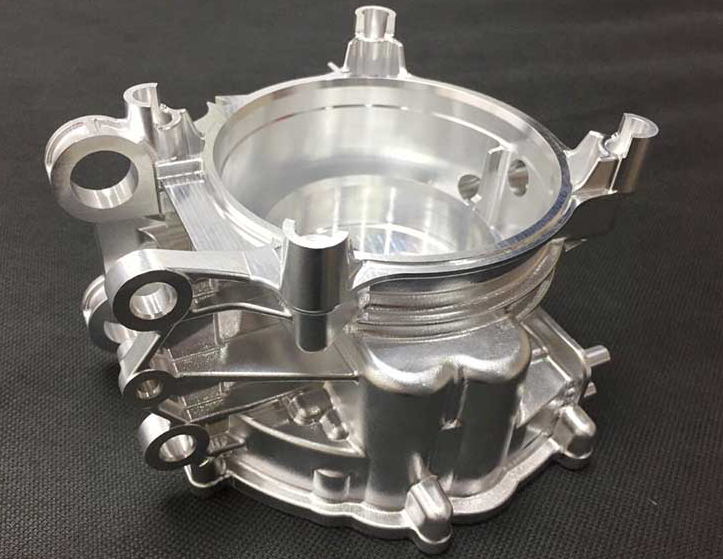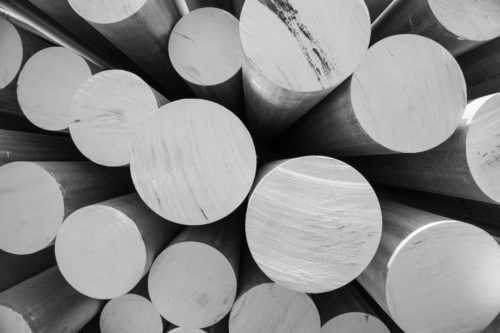Stahl Specialty Company Fundamentals Explained
Stahl Specialty Company Fundamentals Explained
Blog Article
Stahl Specialty Company for Dummies
Table of Contents9 Easy Facts About Stahl Specialty Company ShownStahl Specialty Company Can Be Fun For AnyoneStahl Specialty Company Fundamentals ExplainedNot known Details About Stahl Specialty Company Not known Incorrect Statements About Stahl Specialty Company The Single Strategy To Use For Stahl Specialty Company

If you're designing a steel product, you've likely considered utilizing aluminum as the base product. Pure aluminum has restricted applications, so it is frequently integrated with other components, such as silicon, magnesium, and manganese to form alloys.
(AA), based in North America, has produced requirements that regulate aluminum alloys' composition, residential properties, and language. There are two types of light weight aluminum alloys functioned and cast.
Stahl Specialty Company for Beginners
Cast aluminum alloys are made by melting pure light weight aluminum and incorporating it with other steels while in fluid type. After that the mix is put into a sand, die, or investment mold and mildew. After solidification, the metal is gotten rid of from its mold and mildew. At this stage, it remains in either its last type or as a billet or ingot for more handling.

For example, 160.0 represents a cast with a minimum of 99.60% light weight aluminum. The fourth number, which follows the decimal factor, defines if the alloy is a spreading (xxx. 0) or an ingot (xxx. 1). Wrought light weight aluminum alloys additionally begin by incorporating liquified aluminum with other steels. Unlike cast alloys, nonetheless, they are developed right into their final shape through procedures such as extrusion, rolling, and bending after the steel has actually strengthened into billets or ingots.
There are numerous small differences in between functioned and cast light weight aluminum alloys, such as that cast alloys can consist of more significant amounts of other metals than functioned alloys. However one of the most notable difference in between these alloys is the construction procedure whereby they will certainly go to deliver the end product. Besides some surface area treatments, cast alloys will leave their mold and mildew in practically the specific strong kind preferred, whereas wrought alloys will undergo numerous modifications while in their strong state.
If you think that a functioned alloy may be the most effective for your job, take an appearance at several of our posts that discuss more regarding details wrought alloys, such as Alloy 6061 and Alloy 6063. On the other hand, if you think an actors alloy would certainly be much better for you, you can discover more regarding some actors alloys in our Alloy 380 and Alloy 383 posts (coming quickly).
Stahl Specialty Company for Dummies
When choosing an aluminum factory for your manufacturing demands, it's vital to examine a number of elements. One of one of the most important facets to take into consideration is the experience and capability of the shop. aluminum metal casting. Selecting a foundry that has the best understanding of the light weight aluminum casting procedure, and the profile to show for it, helps to have a successful result for your job
Having the experience and market expertise to craft your spreadings for optimal production and quality end results will certainly simplify the job. Producing light weight aluminum castings requires a facility collection of procedures to accomplish the right results. When choosing a brand-new light weight aluminum foundry to companion with, ensure they have comprehensive industry experience and are well-informed regarding all facets of the aluminum spreading process: layout, production, material evaluation, and item screening.
The foundry should also have a tested performance history of providing outstanding products that fulfill or surpass consumer assumptions. Quality assurance ought to additionally go to the top of your listing when selecting a light weight aluminum foundry. By dealing with a certified foundry that complies with the criteria for high quality control, you can secure the integrity of your product and ensure it satisfies your specifications.
By selecting a firm who supplies solutions that satisfy or exceed your item requirements, you can be sure that your task will certainly be finished with the utmost accuracy and effectiveness. Certain aluminum shops focus on specific sorts of manufacturing procedures or casting methods. Various parts call for various manufacturing techniques to cast light weight aluminum, such as sand casting or die spreading.
Stahl Specialty Company - Questions
Pass away spreading is the name offered to the process of developing intricate metal parts via use mold and mildews of the part, likewise known as passes away. The procedure makes use of non-ferrous metals which do not consist of iron, such as aluminum, zinc and magnesium, as a result of the desirable buildings of the steels such as reduced weight, greater conductivity, non-magnetic conductivity and resistance to corrosion.
Pass away casting manufacturing is fast, making high production levels of components very easy. It creates even more parts than any type of other process, with a high degree of accuracy and repeatability. To get more information about die spreading and pass away casting products utilized while doing so, reviewed on. There are three sub-processes that drop under the group of die casting: gravity pass away spreading (or irreversible mold and mildew spreading), low-pressure die casting and high-pressure die casting.
After the pureness of the alloy is tested, dies are produced. To prepare the passes away for casting, it is vital that the dies are tidy, so that no deposit from previous productions continue to be.
Not known Incorrect Statements About Stahl Specialty Company
The pure steel, likewise called ingot, is contributed to the heating system and maintained at the molten temperature level of the metal, which is then transferred to the shot chamber and infused into the die. The pressure is then maintained as the metal solidifies. When the steel strengthens, the cooling process begins.
(https://urlscan.io/result/0195897f-20fd-7001-a6ac-ce9798aafe78/)
The thicker the wall surface of the component, the longer the cooling time as a result of the quantity of indoor steel that likewise needs to cool down. After the component is totally cooled, the die cuts best site in half open and an ejection system presses the component out. Adhering to the ejection, the die is shut for the next injection cycle.
The flash is the added product that is cast throughout the procedure. This have to be trimmed off utilizing a trim tool to leave just the main component. Deburring gets rid of the smaller sized pieces, called burrs, after the trimming process. Lastly, the element is brightened, or burnished, to provide it a smooth finish.
Stahl Specialty Company Can Be Fun For Everyone

Zinc is one of the most pre-owned alloys for die casting due to its reduced cost of raw products. Its corrosion resistance additionally permits the elements to be lengthy enduring, and it is one of the more castable alloys due to its reduced melting point.
As stated, this alloy is just one of the most typically used, yet produces will, sometimes, select light weight aluminum over zinc because of light weight aluminum's production advantages. Aluminum is extremely economical and among the more flexible alloys. Light weight aluminum is used for a number of different items and industries anything from home window frames to aerospace products.
Report this page